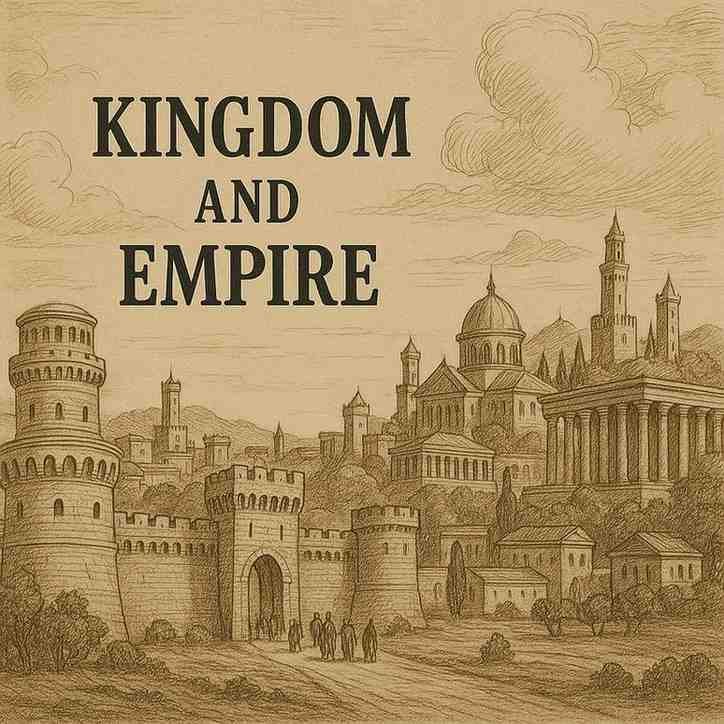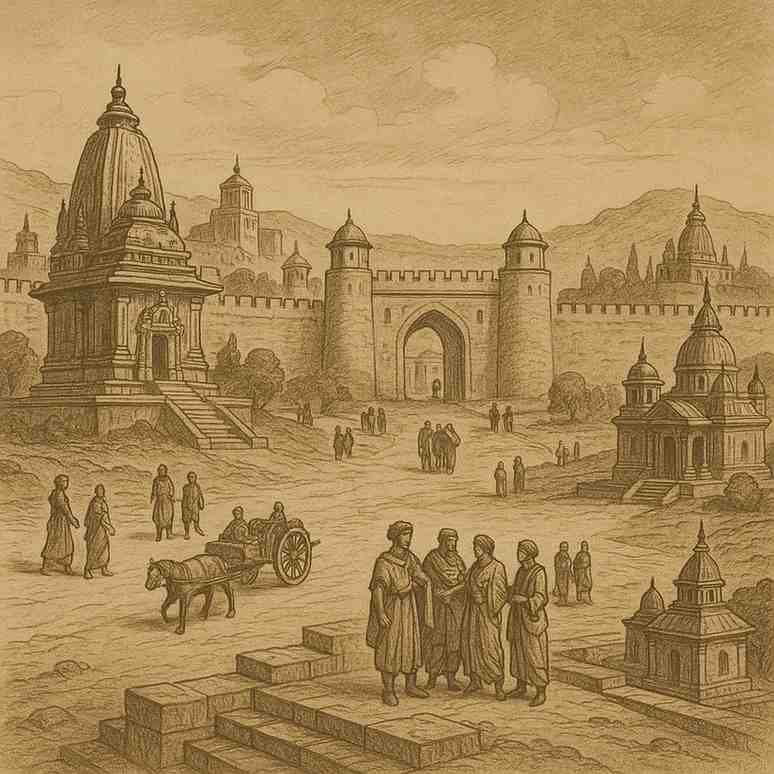Bharatvarsha Through the Ages: A Journey Through Its Historical Narratives
Beyond its ancient etymology and profound cultural spirit, Bharatvarsha is a land rich with captivating historical narratives. These aren’t just dry facts and dates; they are stories of mighty empires, legendary heroes, and the continuous evolution of an idea – the idea of a unified and distinct land. Let’s explore how the historical tapestry of Bharatvarsha was woven, from grand empires to the enduring power of its epic tales.
Ancient Kingdoms and Empires: Forging a Unified Idea
Throughout its long history, Bharatvarsha witnessed the rise and fall of numerous powerful kingdoms and empires, each contributing in its own way to the overarching concept of a unified subcontinent.

- The Mauryan Empire (c. 322–185 BCE): Often considered one of the earliest and most expansive empires of ancient India, the Mauryans, particularly under Emperor Ashoka, brought a significant portion of Bharatvarsha under a single political administration. Ashoka’s edicts, spread across the land, not only propagated moral principles but also fostered a sense of shared identity across diverse regions, laying a foundational stone for the idea of a politically integrated Bharatvarsha.
- The Gupta Empire (c. 320–550 CE): Known as the “Golden Age” of ancient India, the Gupta period saw remarkable advancements in science, art, literature, and philosophy. While not always encompassing the entire subcontinent in a political sense, the cultural flourishing and intellectual achievements of this era created a powerful sense of shared heritage and intellectual unity that resonated across Bharatvarsha, solidifying its cultural identity.
- The Chola Dynasty (c. 9th–13th centuries CE): Dominating the southern peninsula, the Cholas were a formidable naval and military power. Their influence extended far beyond the mainland, reaching Southeast Asian countries. Their administrative prowess, patronage of art and architecture (especially magnificent temples), and extensive trade networks showcased the economic and cultural vibrancy of a significant part of Bharatvarsha.
- The Vijayanagara Empire (c. 14th–17th centuries CE): As a bulwark against invasions from the north, the Vijayanagara Empire in the south became a symbol of resistance and a flourishing center of Hindu culture, art, and architecture. Its existence reinforced the idea of a distinct cultural entity that could thrive and defend its traditions within the larger geographical expanse of Bharatvarsha.
These empires, among many others, though distinct in their reach and time, collectively contributed to the historical experience of a vast land with shared cultural threads, even when not under a single political banner.
The Role of Epics and Puranas in Shaping Historical Consciousness
Long before modern historical records, the great epics and Puranas served as powerful vehicles for shaping the collective memory and identity of Bharatvarsha.
- The Mahabharata: More than just a tale of a great war, the Mahabharata is an encyclopedic narrative that delves into philosophy, ethics, governance, and human nature. Its central conflict, the Kurukshetra War, is set within the heartland of Bharatvarsha, making the land itself a witness to profound moral dilemmas and heroic deeds. The epic’s widespread recitation and performance across generations deeply ingrained a shared narrative, common heroes, and a moral framework that transcended regional differences, fostering a sense of belonging to this ancient land.
- The Ramayana: The story of Lord Rama’s exile, his journey across forests and seas, and his eventual return to Ayodhya, vividly portrays the diverse landscapes and peoples of Bharatvarsha. It weaves together geography, spirituality, and human values, creating a powerful cultural glue. The characters, their virtues, and their struggles became archetypes, reinforcing a shared cultural consciousness across the subcontinent.
The Puranas, with their genealogies of kings, descriptions of sacred sites, and cosmological narratives, further cemented this historical consciousness. While not always strictly chronological, they provided a sense of deep time and continuity, connecting the present inhabitants to a glorious, ancient past associated with Bharatvarsha.
The Idea of a Chakravartin: The Universal Monarch
Central to the political thought of ancient Bharatvarsha was the concept of a Chakravartin (literally, “wheel-turner”). This was not merely a powerful king, but an ideal universal monarch whose righteous rule extended over the entire subcontinent. A Chakravartin was envisioned as a benevolent ruler who brought peace, prosperity, and upheld Dharma across Bharatvarsha.
This idea, often glorified in epics and political treatises like Kautilya’s Arthashastra, served as a powerful aspirational model for kings and emperors. It provided a conceptual framework for political unity, suggesting that the diverse regions of Bharatvarsha were inherently meant to be governed under a single, just authority. Even when such a unified empire didn’t exist in reality, the ideal of the Chakravartin continued to influence political ambitions and the collective imagination of a unified land.
Colonial Impact and the Shift to “India“
The arrival of European colonial powers, particularly the British, marked a significant turning point in how the subcontinent was perceived and named. The term “India,” derived from the Indus River (via Greek and Roman usage), became the predominant name in the English-speaking world and for official administrative purposes.
This shift was more than just a linguistic change; it represented a new lens through which the land was viewed – often as a collection of territories to be administered and exploited, rather than a culturally and spiritually unified entity. Colonial historiography often fragmented the past, emphasizing divisions and downplaying the indigenous concepts of unity.
However, even during colonial rule, the deep-rooted identity of “Bharat” persisted in indigenous languages and cultural expressions. In the post-independence era, when the Indian Constitution was drafted, a conscious decision was made to enshrine both names: “India, that is Bharat, shall be a Union of States.” This constitutional declaration symbolically bridges the modern, international identity with the ancient, indigenous soul of the land, affirming a continuity of heritage.
Today, there is a growing contemporary movement to re-emphasize “Bharat,” reflecting a desire to reconnect with the deeper, more profound cultural and historical roots of the nation, moving beyond the colonial nomenclature and embracing its ancient identity.
Historiography of Bharatvarsha: Debates and Interpretations
The study of Bharatvarsha’s history is a dynamic field, marked by ongoing debates and diverse interpretations. Historians grapple with the challenge of reconstructing a coherent narrative from a wide array of sources – archaeological findings, ancient texts (which often blend history with mythology), inscriptions, and accounts by foreign travelers.
Early colonial historians often presented a view of Indian history that emphasized stagnation and a lack of historical consciousness. However, subsequent scholarship, both Indian and international, has challenged these interpretations, highlighting the sophisticated historical traditions embedded in Puranic genealogies, royal chronicles, and biographical works.
Modern historiography of Bharatvarsha seeks to understand not just political events but also social structures, economic systems, cultural developments, and the evolution of ideas. Debates often revolve around dating ancient events, interpreting mythological elements, and understanding the nature of unity and diversity in different periods. This continuous process of inquiry ensures that the rich and complex story of Bharatvarsha remains a vibrant area of study and discussion.
The historical narratives of Bharatvarsha are a testament to its enduring spirit, its capacity for grand civilizations, and its continuous journey through time, shaping an identity that is both ancient and ever-evolving
read more articles here










